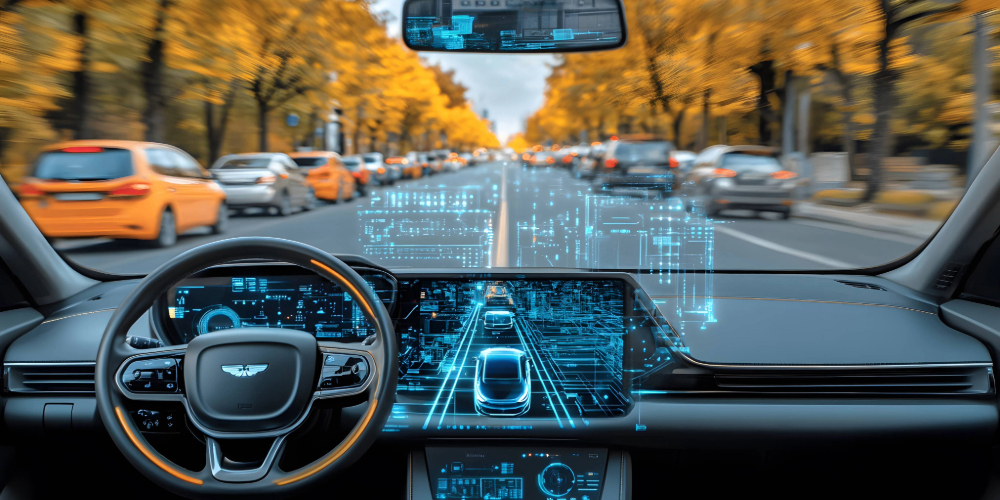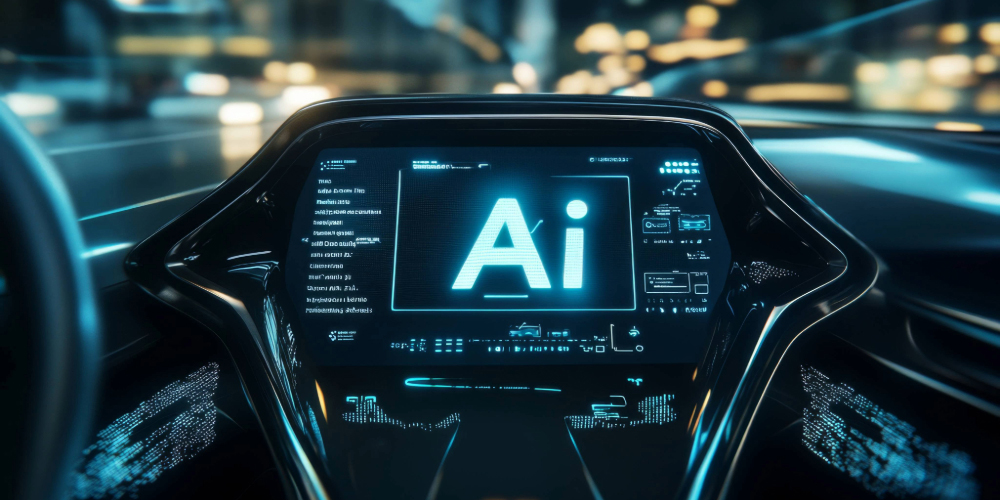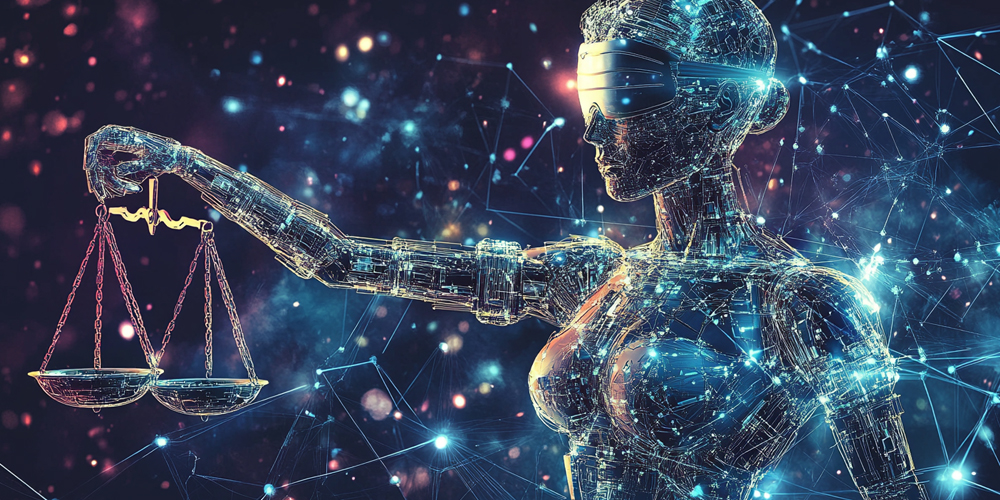Understanding AI Automation Tools
AI in IT Automation refers to the integration of artificial intelligence technologies to enhance and optimize IT processes. This encompasses a range of tools designed to automate repetitive tasks, improve operational efficiencies, reduce human error, and enable data-driven decision-making. AI automation tools are increasingly essential in managing the complexity and scale of modern IT infrastructures, allowing organizations to allocate their human resources to more strategic activities.
The Role of AI in IT Automation
AI plays a crucial role in IT automation by providing advanced data analysis capabilities, machine learning algorithms, and intelligent predictive analytics. These tools are capable of recognizing patterns and making decisions that would typically require human intervention. For instance, AI can automate system monitoring, manage workflows, and even predict system failures before they occur, thereby significantly reducing downtime.
Examples of AI Automation Tools
Several AI automation tools have emerged as leaders in the industry, each offering unique features:
- ServiceNow: This platform uses AI to automate IT service management processes. It leverages machine learning to analyze user interactions and enhance user experience by predicting and resolving IT issues proactively.
- Zest AI: Focused primarily on credit risk assessment, this tool utilizes AI to automate credit decisions, providing faster responses and reducing the manual workload involved in lending.
- UiPath: A significant player in robotic process automation (RPA), UiPath integrates AI capabilities to automate routine tasks across various applications, thereby improving efficiency and accuracy.
Benefits of Implementing AI Automation in IT
Incorporating AI in IT automation can bring numerous benefits, including:
- Increased Efficiency: Automation of routine tasks frees up IT personnel to focus on more complex issues that require human insight and creativity.
- Cost Savings: By reducing the time spent on repetitive tasks, companies can enhance productivity and cut operational costs.
- Error Reduction: AI algorithms are less prone to mistakes compared to humans, which can lead to more reliable IT operations.
- Scalability: AI tools can easily adapt to growing business needs without the significant increase in personnel typically required for expansion.
Challenges of AI Automation Tools
While the benefits are substantial, challenges do exist in the adoption of AI automation tools:
- Integration: Integrating new AI tools with existing IT systems can be complex and time-consuming.
- Data Privacy: Handling sensitive data with automated systems raises concerns regarding compliance and security.
- Skill Gaps: There might be a shortage of skilled personnel who can manage and maintain these advanced tools effectively.
The Future of AI Automation Tools
The future of AI in IT automation looks promising, with ongoing advancements in machine learning and natural language processing. Innovations such as self-learning AI systems are capable of adapting to new conditions and continuously improving without human intervention. For more insights on how AI technologies are evolving, explore topics like the self-learning AI revolution. Additionally, applications in various fields, such as self-driving vehicles, showcase the expanding influence of AI across diverse sectors.
AI Automation and Digital Transformation
Understanding AI in IT Automation
AI in IT Automation represents a significant evolution in how organizations manage their IT processes. By integrating artificial intelligence into IT operations, businesses can increase efficiency, reduce human error, and lower operational costs. Automation powered by AI can perform complex tasks such as system monitoring, predictive maintenance, and incident management with minimal human intervention.
The Role of AI in Automating IT Processes
Traditionally, IT departments relied heavily on manual processes for tasks like system management and troubleshooting. With the rise of AI in IT Automation, many routine tasks can now be handled by intelligent systems. For instance:
- Incident Response: AI systems can automatically diagnose and resolve common IT issues, significantly reducing the response time.
- Predictive Analytics: By analyzing historical data, AI can forecast potential system failures, allowing teams to address problems before they escalate.
- Workflow Automation: Tools like robotic process automation (RPA) can streamline repetitive tasks, freeing human resources for more strategic initiatives.
Examples of AI in IT Automation
Numerous organizations have implemented AI in IT Automation to enhance their operational efficiency. Here are a few notable examples:
- ServiceNow: This platform uses AI to automate IT service management workflows, enabling businesses to respond to incidents and service requests faster and with greater accuracy.
- Splunk: Utilizing machine learning, Splunk automates the analysis of machine data to identify anomalies, detect threats, and provide actionable insights for IT teams.
- Cisco: By leveraging AI, Cisco’s security automation tools can rapidly assess and respond to potential threats, minimizing damage and ensuring continuity.
Benefits of AI Automation in Digital Transformation
The integration of AI into IT automation aligns with broader digital transformation goals and provides numerous benefits:
- Increased Efficiency: Automating repetitive tasks allows IT staff to focus on innovation and strategic initiatives rather than routine maintenance.
- Enhanced Accuracy: AI systems perform tasks with high precision, reducing the risk of human error associated with manual processes.
- Cost Reduction: Efficient automation leads to lower operational costs by minimizing downtime and optimizing resource allocation.
- Better Decision Making: AI tools can analyze vast amounts of data rapidly, providing critical insights that aid in informed decision-making.
Challenges in Implementing AI Automation
While the benefits are significant, several challenges accompany the adoption of AI in IT Automation:
- Data Quality: Successful AI implementation hinges on the availability of high-quality, relevant data. Poor data can lead to inaccurate outcomes.
- Integration Complexity: Merging AI systems with existing IT infrastructure can be complex and may require skilled personnel.
- Cultural Resistance: Employees may resist adopting automation due to fears of job displacement. Effective change management and training are crucial to overcoming this barrier.
Conclusion
The integration of AI in IT Automation is a pivotal aspect of digital transformation, enabling organizations to optimize their IT processes and foster innovation. By automating routine tasks and leveraging predictive analytics, businesses not only enhance operational efficiency but also position themselves to adapt to the ever-evolving technological landscape.
AI Automation in Test Automation
Understanding AI Automation
AI automation in test automation leverages artificial intelligence to streamline and enhance the process of software testing. By integrating AI in IT automation, organizations can significantly improve efficiency, accuracy, and speed in their development cycles. This integration helps automate repetitive tasks, allowing test teams to focus on more complex and critical aspects of software quality assurance.
Benefits of AI in Test Automation
- Increased Efficiency: AI can quickly analyze code changes and determine the tests that need to be executed, minimizing manual intervention.
- Enhanced Accuracy: With machine learning algorithms, AI can identify patterns and anomalies in testing data, reducing the chances of human error.
- Adaptive Learning: AI systems continue to learn from previous test results, improving their efficacy over time and adapting to new scenarios without requiring extensive reprogramming.
- Cost Reduction: By automating repetitive testing tasks, organizations can reduce the workload on human testers, leading to decreased operational costs.
Key Components of AI in Test Automation
Several core components embody the use of AI in IT automation for test automation:
- Test Case Generation: AI can automatically generate test cases based on user stories, application requirements, and historical data, ensuring that all critical paths are covered.
- Defect Prediction: By analyzing past defects and their impacts, AI tools can predict potential areas of failure, allowing teams to address issues before they escalate.
- Continuous Testing: The integration of AI enables continuous integration/continuous deployment (CI/CD) frameworks to automatically run necessary tests with every code change.
Real-World Examples of AI in Test Automation
Companies are increasingly adopting AI in their testing workflows. Here are a few notable examples:
- Facebook: Facebook has implemented AI-driven testing tools to automatically generate test cases for its mobile applications. This not only saves time but also increases the coverage of testing.
- Google: Google utilizes machine learning algorithms to enhance its testing processes. For example, their Experimentation Infrastructure (ExP) uses AI to analyze A/B testing results and help refine application features.
- Uber: Uber employs AI to optimize their testing strategy by analyzing system performance and effectiveness of different test scenarios, allowing for rapid iterations and improvements.
Challenges of Integrating AI in Test Automation
While the benefits of AI automation in test automation are substantial, there are some challenges that organizations may face:
- High Initial Investment: Implementing AI tools may require significant upfront investment in technology and training.
- Complexity of AI Models: Designing and maintaining AI models can be complex and may necessitate specialized knowledge and skills.
- Resistance to Change: Team dynamics may shift as testing becomes more automated, leading to potential resistance from team members who are accustomed to traditional methods.
Future Trends in AI Automation for Testing
The landscape of AI in test automation is rapidly evolving. Here are some future trends to watch:
- Increased Adoption of No-Code/Low-Code Tools: More businesses are likely to adopt no-code or low-code platforms that integrate AI automation, making it accessible for non-technical users.
- Use of Natural Language Processing (NLP): AI tools that utilize NLP will enable testers to create and manage test cases using plain language, further simplifying the testing process.
- Enhanced Collaboration: As AI continues to evolve, it is expected to foster improved collaboration between development and QA teams, reducing silos in software development.
Understanding AI in IT Automation
AI in IT Automation refers to the use of artificial intelligence technologies to improve, streamline, and automate various IT processes and tasks. The integration of AI into automation not only enhances efficiency but also allows businesses to effectively manage vast amounts of data and complex systems. This integration is increasingly crucial in today’s fast-paced digital environment.
Key Benefits of AI in IT Automation
Enhanced Efficiency
One of the most significant advantages of integrating AI in IT Automation is the improvement in operational efficiency. AI systems can analyze data and perform routine tasks much faster than humans. For example, routine IT support queries can be handled by AI-powered chatbots, reducing response times and allowing human employees to focus on more complex issues.
Predictive Analytics
AI can significantly enhance predictive analytics capabilities in IT environments. By analyzing historical data, AI algorithms can identify patterns and predict future problems before they occur. For instance, systems equipped with AI can foresee potential outages and proactively alert IT teams, allowing them to take preventive measures.
Cost Reduction
Implementing AI in IT Automation can lead to substantial cost savings. By automating repetitive tasks, businesses can reduce labor costs associated with manual execution. Additionally, predictive maintenance powered by AI can prevent costly downtimes, leading to further savings.
Real-World Applications of AI in IT Automation
Automated Monitoring and Management
Many organizations are using AI to automate the monitoring and management of IT infrastructure. For instance, AI systems can continuously assess the health of servers, networks, and applications, automatically adjusting configurations or reallocating resources as needed. Companies like Dynatrace utilize AI for real-time monitoring, significantly boosting operational reliability.
Incident Management
AI-driven IT automation tools like ServiceNow and Puppet help streamline incident management by automating ticket creation and prioritization based on urgency and impact. This not only accelerates the resolution process but also improves service delivery.
Challenges of Integrating AI in IT Automation
Data Quality and Integration
The effectiveness of AI in IT Automation heavily relies on the quality of the input data. Poor or inconsistent data can lead to inaccurate predictions and ineffective automation processes. Organizations must invest in data cleansing and integration strategies to maximize the benefits of AI.
Resistance to Change
Change management can pose significant challenges when implementing AI solutions. Employees might express concerns about job displacement or lack of familiarity with new technologies. Addressing these concerns through training and open communication is crucial for successful integration.
Future Trends of AI in IT Automation
Increased Use of Machine Learning
The evolution of machine learning will significantly impact AI in IT Automation, allowing systems to learn from data patterns and improve over time. Organizations will increasingly rely on self-learning systems to optimize IT processes without human intervention.
Focus on Security Automation
With the rise in cyber threats, AI will play an essential role in automating security measures within IT environments. AI solutions will be able to detect anomalies, respond to threats in real-time, and adapt to new security challenges more efficiently than traditional methods.
Conclusion
AI in IT Automation is revolutionizing how organizations manage their IT infrastructure and processes. With its ability to enhance efficiency, reduce costs, and improve decision-making, the integration of AI technologies into IT automation strategies is proving to be an essential investment for businesses looking to thrive in a competitive landscape.

Increased Efficiency
One of the primary benefits of AI automation in various sectors, particularly in IT operations, is the significant increase in operational efficiency. By automating repetitive tasks, AI technologies can handle routine operations with greater speed and accuracy than human counterparts. This leads to reduced downtime and faster response times for IT issues.
For example, AI in IT automation can streamline software deployment processes. Traditional software updates often require extensive manual effort, including planning, testing, and implementation. However, AI tools can automate these deployments, ensuring that updates are rolled out smoothly and efficiently, reducing the strain on IT teams.
Cost Savings
Implementing AI in IT automation can lead to substantial cost savings for organizations. By minimizing the need for extensive manual labor and reducing human errors, companies can save on labor costs and avoid potential expenses related to downtime or mistakes.
Take, for instance, automated incident response systems. These systems can diagnose and resolve common IT issues without human intervention. As a result, businesses can allocate fewer resources to their IT maintenance, allowing them to focus on more strategic initiatives. A case in point is a major cloud provider that reported a significant decrease in operational costs after integrating AI-driven monitoring and management tools.
Improved Accuracy
AI technologies can enhance the accuracy of tasks through advanced algorithms and machine learning. In IT environments, this means fewer errors that can arise from manual interventions, such as incorrect configurations or mistake-prone data entry processes.
For example, AI in IT automation can be utilized for monitoring system performance and detecting anomalies. Machine learning algorithms can analyze vast amounts of data to identify patterns and predict potential issues before they occur. This proactive approach not only minimizes disruptions but also ensures that systems run more reliably.
Enhanced Security
Cybersecurity is a critical concern for any organization, and AI plays a pivotal role in bolstering defenses. By leveraging AI in IT automation, organizations can harness predictive analytics to anticipate threats.
AI systems can analyze user behavior and network traffic to establish baselines and detect anomalies that may indicate a security breach. For example, during a heightened threat landscape, automated systems can respond quickly to potential intrusions, quarantining affected systems and alerting IT staff for further investigation, thereby reducing the risk of extensive damage.
Better Scalability
As organizations grow, their IT requirements become more complex. AI in IT automation allows businesses to scale their operations efficiently without proportionately increasing costs or human resources. Automated systems can handle increased workloads seamlessly, ensuring that services remain reliable even during peak times.
An example of this can be seen in cloud computing environments, where AI-driven load balancing automatically allocates resources based on current demand. This not only ensures optimal performance but also enhances user satisfaction by delivering consistent service quality.
Improved Employee Satisfaction
By utilizing AI automation to handle mundane tasks, employees can focus on more meaningful, value-added activities. This shift can lead to higher job satisfaction and improved employee morale.
For instance, in IT support roles, many technicians find their time consumed by repetitive troubleshooting calls. Implementing AI-driven chatbots and support systems can alleviate this burden, allowing IT staff to engage in more strategic projects and innovation-focused tasks, thus enhancing overall workplace satisfaction.
Data-Driven Insights
AI technologies can process and analyze vast amounts of data quickly, providing organizations with actionable insights that inform their decision-making processes. This is particularly valuable in IT management, where data can inform system performance, user behavior, and operational efficiency.
For example, tools that integrate AI in IT automation can generate detailed reports on system performance metrics, helping managers identify areas for improvement. These insights allow organizations to make data-driven decisions, optimizing their IT infrastructure and ensuring alignment with overall business goals.
Challenges and Considerations in AI in IT Automation
Understanding the Complexity of Integration
The integration of AI in IT Automation often proves to be a complex challenge for organizations. This complexity arises from the necessity to integrate new AI tools with existing IT systems and infrastructures. Companies may face compatibility issues, requiring significant adjustments to their architecture.
For instance, an established enterprise resource planning (ERP) system may not natively support AI tools, necessitating custom middleware or API development. Organizations must also invest time in training staff to effectively manage and use these new automated systems.
Data Quality and Management Issues
Another significant challenge is the quality of data. AI algorithms rely heavily on data inputs to function correctly. If the data is inaccurate, incomplete, or not representative, it can lead to poor performance of the automation process. This aspect is crucial as automated processes can perpetuate existing errors.
An example of this can be found in customer service automation, where an AI chatbot programmed with outdated or incorrect information may provide misleading responses to users, degrading customer experience and potentially damaging the brand’s reputation.
Cost Implications
While AI in IT Automation can lead to significant cost savings in the long run, the initial investment can be substantial. Organizations need to invest in technology, infrastructure upgrades, and possibly new hires with specialized skills in AI and data science.
Moreover, there is an ongoing cost associated with maintaining and updating AI systems. Businesses must weigh these costs against the expected benefits and develop a comprehensive budget that can accommodate unforeseen expenses.
Regulatory and Ethical Considerations
The deployment of AI in IT automation also brings forth a host of regulatory and ethical challenges. Organizations must navigate laws surrounding data privacy, security, and compliance. For example, GDPR in Europe imposes strict regulations on how data is collected and used, which can impact how AI tools operate.
Ethical considerations, such as algorithmic bias, must also be addressed. AI systems can unintentionally perpetuate biases present in historical data, leading to unfair treatment of certain user groups. It is essential for organizations to implement thorough testing and validation processes to mitigate these risks.
Impact on Workforce Dynamics
AI in IT Automation fundamentally alters workforce dynamics, raising concerns about job displacement. Employees may fear losing their jobs to automation, creating tension within the workplace.
It is crucial for organizations to approach these changes sensitively. Providing retraining opportunities and communicating the benefits of AI tools in supporting human roles can help mitigate fears. For instance, IT support staff can be retrained to oversee AI tools rather than be replaced by them.
Continuous Learning and Adaptability
The fast-paced evolution of AI technology necessitates continuous learning and adaptability from organizations. Companies must stay abreast of the latest developments in AI algorithms, tools, and best practices, which may require creating a culture of ongoing education and training.
Organizations that fail to adapt may find their automation efforts lagging behind competitors, ultimately impacting their market position. Regular workshops and training sessions can instill a culture of innovation and ensure that teams are equipped with the necessary skills.
Conclusion: Strategic Planning for AI Implementation
To overcome the challenges associated with implementing AI in IT Automation, it’s essential for organizations to engage in strategic planning. This includes thorough assessments of current IT capabilities, setting clear objectives, and formulating a comprehensive roadmap for integration.
By addressing the complexities of integration, managing data quality, considering cost implications, ensuring compliance with regulations, and preparing the workforce, businesses can harness the full potential of AI in their IT automation strategies.

The Future of AI in IT Automation
The realm of AI in IT automation is poised for transformative changes that promise to enhance efficiency, reliability, and innovation across various sectors. As organizations increasingly shift towards digital transformation, the integration of AI technologies in IT automation is becoming essential. This section delves into the anticipated advancements and their implications for businesses and IT professionals alike.
Key Developments in AI for IT Automation
Several key advancements are shaping the future of AI in IT automation:
- Enhanced Predictive Analytics: By leveraging AI algorithms, organizations can more accurately forecast system failures and performance issues. For instance, predictive maintenance in cloud services can reduce downtime by anticipating hardware failures before they occur.
- Intelligent Process Automation (IPA): Combining RPA (Robotic Process Automation) with AI capabilities enables more complex task automation. Companies like UiPath are already implementing AI models that learn from previous interactions to enhance process efficiency and decision-making.
- Self-Healing Systems: AI-driven IT systems are evolving to automatically detect anomalies and rectify issues without human intervention. This self-healing capability can significantly save time and resources in IT support.
Real-World Applications of AI in IT Automation
The deployment of AI in IT automation is evident in various industries, showcasing its versatility and efficacy:
- Financial Services: Banks are employing AI to automate transactions and fraud detection. For example, ZestFinance utilizes machine learning models to assess credit risk more effectively, enabling faster decision-making.
- Healthcare: Hospitals are employing AI tools to automate administrative tasks and patient data management. IBM’s Watson Health, for instance, assists in automating patient record sorting and analysis, leading to improved operational efficiency.
- Retail: E-commerce platforms use AI to manage inventory and enhance customer service through chatbots. Companies like Amazon leverage AI-driven recommendations to streamline market operations and personalize customer experiences.
Challenges and Considerations
Despite its promise, AI in IT automation presents certain challenges that must be addressed:
- Data Privacy and Security: As AI systems handle vast amounts of sensitive data, ensuring compliance with privacy regulations, such as GDPR, becomes crucial. Organizations must adopt AI models that prioritize data protection.
- Skill Gap: The rapid evolution of AI technologies demands that IT professionals continually upgrade their skills. Companies must invest in training programs to equip their workforce with relevant AI competencies.
- Integration with Legacy Systems: Many organizations still rely on legacy IT systems that may not easily integrate with new AI solutions. A hybrid approach may be necessary to bridge this gap effectively.
Looking Ahead: The Transformative Power of AI in IT Automation
The future trajectory of AI in IT automation points towards a more connected, intelligent enterprise landscape. As AI technologies continue to mature and organizations adapt to these innovations, we are likely to witness:
- Greater Integration Across Functions: AI will enable seamless communication between different IT functions, creating a more cohesive operational framework that enhances collaboration.
- Personalization at Scale: AI tools will refine customer interactions by personalizing experiences based on behavior patterns, driving customer satisfaction and loyalty.
- Innovation in Service Delivery: The increasing deployment of AI-powered automation will lead to the creation of new service models, transforming traditional business operations and fostering competitive advantage.
Understanding AI Automation
What is AI Automation?
AI Automation refers to the integration of artificial intelligence technologies with automated processes to enhance efficiency and effectiveness across various industries. It leverages AI capabilities to perform tasks that were traditionally carried out by humans, thus transforming workflows and operations. The deployment of AI in automation aims to reduce human error, improve speed, and optimize overall performance.
The Role of AI in IT Automation
AI in IT Automation revolutionizes the way IT services are managed and delivered. By applying machine learning algorithms, natural language processing, and predictive analytics, AI enables IT teams to optimize performance and predict issues before they escalate. For example, AI solutions can automatically resolve common IT incidents by understanding and responding to user requests through chatbots or automatic ticketing systems.
Key Components of AI Automation in IT
- Machine Learning: Algorithms that learn from data, allowing systems to improve over time without being explicitly programmed. This is crucial for predictive maintenance and anomaly detection in IT systems.
- Natural Language Processing (NLP): Enables machines to understand and process human language, facilitating communication between users and automation tools through chatbots and virtual assistants.
- Robotic Process Automation (RPA): Software robots that perform repetitive tasks by mimicking human actions, such as data entry or transaction processing, freeing up IT personnel for more complex duties.
Examples of AI in IT Automation
There are numerous applications of AI in IT Automation that demonstrate its effectiveness:
- Incident Management: AI systems can categorize incoming IT support tickets automatically and suggest resolutions based on historical data, significantly decreasing response and resolution times.
- Performance Monitoring: Tools powered by AI continuously analyze system performance metrics, identifying unusual patterns that could signal potential issues, thereby allowing proactive measures to be taken before incidents occur.
- Cloud Management: AI automates resource allocation in cloud environments, adjusting capacity dynamically based on usage patterns, which optimizes costs and ensures efficiency.
Benefits of AI Automation in IT
The integration of AI in IT Automation provides multiple advantages, including:
- Increased Efficiency: Automation speeds up routine processes, allowing IT departments to focus on more strategic initiatives.
- Improved Decision-Making: With advanced data analytics, AI can help IT operators make informed decisions quickly, enhancing operational effectiveness.
- Cost Reduction: By minimizing human effort in routine tasks, organizations can achieve significant cost savings in labor and resource management.
Challenges and Considerations
Despite its benefits, the deployment of AI in IT Automation comes with challenges that organizations must navigate:
- Data Quality: The effectiveness of AI is highly dependent on the quality of data fed into its systems. Poor data can lead to inaccurate predictions and automation failures.
- Security Risks: As automated processes and AI systems are integrated, organizations must ensure that robust security measures are in place to protect against vulnerabilities and cyber threats.
- Change Management: Adopting AI technologies often requires a cultural shift within organizations, demanding training and adjustments in existing workflows.
Future of AI in IT Automation
The future of AI in IT Automation looks promising, with continued advancements expected to drive greater innovation. Emerging technologies such as explainable AI, which provides transparency into AI decision-making processes, are likely to enhance trust and usability. Furthermore, as AI continues to evolve, its increasing capabilities will allow for more complex and contextually aware automation, changing the landscape of IT operations profoundly.





